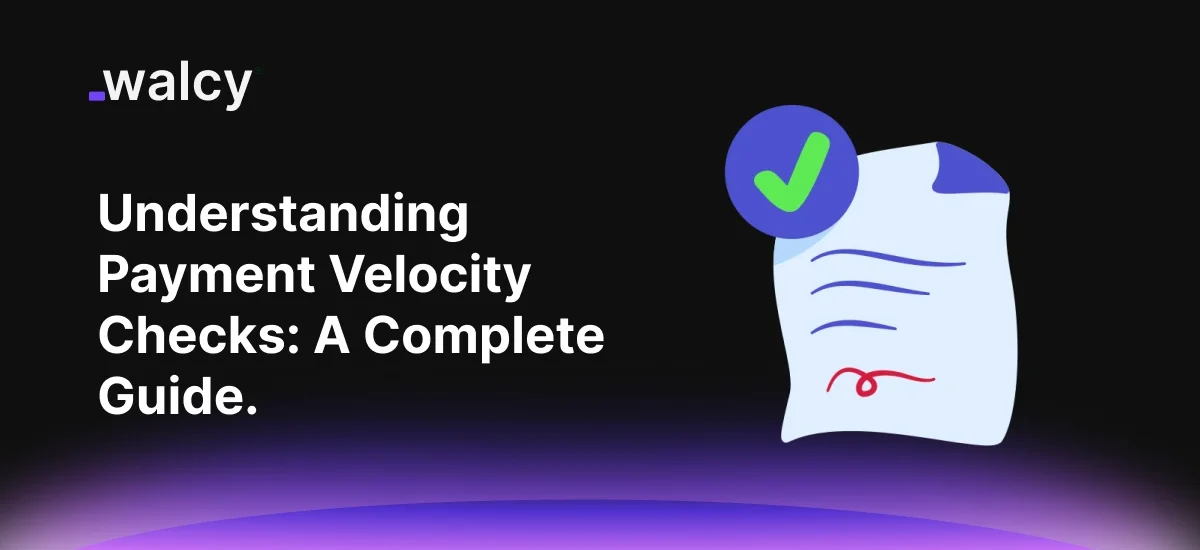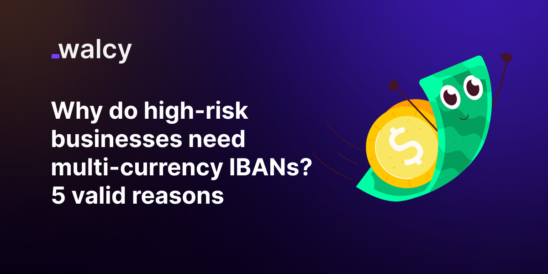In the world of finance and payment processing, the security and legitimacy of transactions hold the highest priority.
Among these, one of the key tools to attain such a goal is the velocity check.
This article will explain what a payment velocity check is, how it works, the challenges associated with it, and its importance in modern systems of payments.
In the end, it will give one a complete understanding of the meaning of each and everything related to the concept of a velocity check.
It includes topics such as velocity check online, velocity exceeded meaning, velocity check valve, velocity rules, and velocity verification.
What is a Payment Velocity Check?
A payment velocity check is a fraud-arresting mechanism used by different payment processors, banks, and merchants to monitor and create limits for how many, and how large transactions occur within a specified period.
The term “velocity” relates to the speed at how fast transactions are being conducted. A company is able to identify suspicious activity that may be fraudulent in nature by monitoring the velocity of the transactions.
For example, a velocity check can be issued when there is a sudden rush of a number of high-value transactions in a very short period of time by a customer.
In such cases, those transactions are flagged by the system for further review or blocked if they exceed certain thresholds.
Key Components of Velocity Checks
1. Transaction Frequency: The number of transactions conducted within a given period, such as per hour, day, or week.
2. Transaction Amount: The overall monetary value of transactions within the same timeframe.
3. Geographic Location: The precise location from which the transactions are made.
4. Device or IP Address: The device or IP address that originates the transactions in question.
5. Behavioral Patterns: The spending behavior of a customer by average amount per transaction and per day.
Read about: The Best Way to Transfer Large Sums of Money Abroad
How Velocity Checks Works?
Velocity checks usually form part of any fraud detection system. Here’s how this works in steps:
1. Data Collection: The system begins to collect data about each transaction, including the time, date, amount, location, and customer information.
2. Setting Thresholds: A predefined threshold relating to the frequency and volume of transactions is established by a business enterprise based on experience and risk appetite. These thresholds are often referred to as velocity rules.
3. Real-Time Monitoring: The system watches every transaction in real time and matches it with the set velocity rules.
4. Flag Suspicious Activity: If a transaction or set of transactions exceeds the pre-set thresholds, the system flags such as suspicious.
5. Further verification of flagged transactions: It might involve further verification procedures that could also comprise verification based on velocity and require confirmation by a call to the customer or authentication.
6. Act: After verification, the transaction is cleared or blocked, or may be set on hold for review.
Example Scenario
Imagine a customer who typically makes one or two purchases per month, each averaging around 50. Suddenly, this customer makes ten purchases in a single day, exceeding 50.
Suddenly, this customer makes ten purchases in a single day, each exceeding200. This unusual activity would likely trigger a velocity check.
The system would flag these transactions, and the merchant might contact the customer to verify the purchases.
If the customer confirms that the transactions are legitimate, they will be approved. If not, the transactions would be blocked, and further action might be taken to secure the account.
Read about: Online Banking Security: A Comprehensive Overview”
Online Velocity Check
E-commerce and every other online transaction-based business depends partly on doing an online velocity check.
Online velocity checks are somewhat like the traditional velocity checks but oriented more to monitor digital transactions.
They often include additional data points, such as IP addresses, device fingerprints, and browser information, for a more comprehensive review of the velocity of a transaction.
Benefits of Velocity Check Online
Improved Security: Online velocity checks serve as ways of warding off fraudulent activities, which are more prevalent online.
In Real-Time: Online systems can monitor these transactions in real-time, which supports immediate action, when necessary, once suspicious activity has taken place.
Custom Rules: Merchants are allowed to establish their velocity rules in accordance with their particular needs and risk appetite.
Read about: Top Online Payment Methods Across The World.
Velocity Excedeed Meaning
When any transaction or series of transactions go above the predefined thresholds of speed, it is said that the velocity has been exceeded.
This term is mostly used in fraud detection systems, which means further investigation is required.
Implications of Velocity Exceeded
Transaction Blocking: Transactions that exceed velocity thresholds may be blocked automatically to avoid any fraud.
Customer Notification: The customer may be sent a notification that your transaction has set off an out-of-bound condition and may request additional verification for further processing.
Account Review: Accounts that breach velocity limits in excess may be put under detailed scrutiny, probably with a temporary suspension, subject to a more advanced phase of security interference.
Velocity Check Valve
Although the term ‘velocity check valve’ will have no relation to payment processing, it would be worth talking about velocity checks.
In engineering, a check valve regulating the flow of fluids in a system so that the velocity thereof will not exceed a particular threshold is called a velocity check valve.
This concept is somewhat related to payment velocity checks where the “flow” of transactions is monitored and controlled to not exceed an unwanted or fraudulent level.
Velocity Rules
Velocity rules are predefined thresholds and criteria for the exact conditions that would necessitate the triggering of a velocity check.
These rules generally derive from historic transaction data and vary depending on business requirements.
Common Examples of Velocity Rules
Transaction Count: Within a fixed period, more than a predetermined number of transactions could not have occurred: a maximum number of more than 5 transactions in an hour.
Transaction Amount: Maximum monetary value of the total number of transactions over a given time: no more than $1,000 per day.
Geographical Limits: For example, disallowing any transaction originating from a place: no transactions from high-risk countries.
Device or IP Limits: For instance, disallowing transactions from the same device or IP address: no more than 3 transactions within 24 hours from the same IP address.
Customizing Velocity Rules
Businesses can set their rules of velocity to fit their levels of risk tolerance, industry benchmark standards, or even customer behaviors.
For example, a high-end jewelry shop would want a low threshold value due to its product value but would increase thresholds for a grocery store that has transactions frequently and for low values.
Velocity Checks Challenges
While velocity checks are a great tool for fraud prevention, they do come with their own set of challenges.
Some of the most common include:
1. False Positives
One of the major concerns with the velocity checks is the possibility of false positives.
This is where valid transactions are identified as suspicious, mainly because they are beyond the preset threshold limits for speed.
These false positives can be frustrating for the customers, reducing sales and thus piling more administrative work on the merchant.
2. Evolving Fraud Tactics
Fraudsters constantly find ways around security, which includes velocity checks.
A fraudster may, for instance, use several accounts, different devices, or IP addresses in order to distribute their transactions and avoid detection.
What this means for businesses is they must continually update and refine their rules on velocity to stay ahead of fraudsters.
3. Striking a Balance between Security and Customer Experience
This would include balancing between security and customer experience.
With stringent velocity checks to minimize fraud, sometimes this also creates discomfort for the customer.
A balance needs to exist within the companies for fraud not to occur yet at the same time without compromising the customers’ experiences.
4. Data Privacy Concerns
Velocity checks that are based on the collection and analysis of data about a transaction do not handle the issue of data privacy.
A fictional business will be mandated to show compliance with basic data protection regulations such as GDPR and CCPA during the implementation of velocity checks.
Velocity Verification
It is the verification process that confirms the legitimacy of transactions flagged off by a velocity check. Normally, this comprises further authentication and includes:
Two-Factor Authentication (2FA): In this process, for any customer, a second form of verification is sought in mobile phones, a one-time password.
Customer Contact: This involves calling or contacting the customer directly to verify the transactions.
Document Verification: The system requires more documents from the customer to be verified, which might include a government-issued ID or proof of address.
Importance of Velocity Verification
Velocity verification is very important to minimize the false positives so that too many valid transactions are not blocked.
Also, it enhances the security circle and makes it difficult for fraudsters to get through.
Conclusion
Payment velocity checks are a vital component of modern fraud prevention strategies.
By monitoring the frequency and volume of transactions, businesses can identify and prevent fraudulent activity before it causes significant harm.
However, implementing effective velocity checks requires careful consideration of velocity rules, potential challenges, and the need for velocity verification.
The landscape will keep changing, and fraudsters will alter their tactics over time.
Every business needs to remain vigilant with constant updates and refinements to the velocity checks in order to outpace the emergence of new threats maintain trust among its valued customers, secure its revenues, and make sure operations flourish in the long run.
In a nutshell, velocity checks are important for the integrity of any kind of payment system, and they may be performed both online and conventionally.
Any business wishing to secure its transactions in this increasingly digital world needs to understand the nuances of velocity checks: what is meant by ‘velocity exceeded’, the role of velocity rules, and why velocity verification is important.
Do follow us on Facebook and LinkedIn, to stay connected with us.



